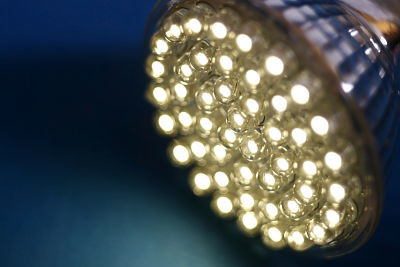 Did you know that 20% of the entire world’s electricity is used to power lighting? What if I told you that, that number could drop to just 4%. Imagine the implications of a cheaper, more efficient lighting source.Well, this may soon become a reality with the recent invention of a new LED light source by Nobel prize winners Isamu Akasaki, Hiroshi Amano and Shuji Nakamura. Who knew LED light could win you a Nobel Prize?! But I digress.We all use light in our daily lives. Whether it is to brighten up your room or to read your book, we all depend on light. However that dependence brings with it the issue of price.As you’re no doubt aware, electricity prices continue to rise and ultimately that will mean we’ll become more cautious about its usage. And price isn’t the only consideration for our electricity, so too is its environmental impact. The high energy use of many lighting sources significantly impacts the environment. So it makes sense to respond to these issues, and that is exactly what Akasaki, Amano and Nakamura have done.The trio have created a blue light-emitting diode which allowed for the creation of an efficient light source called white LED lamps. To create a white LED light, red, green and blue LED light s combine to create the steady white light. However up until the trio’s work, there was no blue LED light. Now that there is, white LEDs can be created.Right now lighting is still dominated by the old technology of an incandescent bulb. These bulbs are highly inefficient as they work by heating up a wire filament, which produces light. However it wastes a lot of energy as a lot of heat is generated and lost in the process.White LED light on the other hand emits a bright white light, which is long lasting and energy efficient. This energy efficiency means that compared to other light sources, white LED light is a cheaper source.Furthermore the environmental implications could be huge. Not only is the white LED lamp energy efficient, they are also efficient in terms of physical wastage. LEDs can last up to 100,000 hours, whereas incandescent bulbs only last around 1,000 hours and fluorescent lights, although longer lasting than incandescents, only last up to 10,000 hours. So we could see a massive improvement in material efficiencies in our lighting as well.But wait there’s more…. currently there are around 1.5 billion people who lack (often financial) access to lighting that may soon have greater access to affordable and long lasting energy sources.Clearly this little blue LED light has the potential to help progress humanity to an energy efficient, environmentally friendly well-lit future.In the meantime, if you’re looking for someone to help you create beautiful spaces in your home or in your garden or outdoor spaces, helped along by some lighting technology, we’d be delighted to talk to you. You can call us on 1300 045 103 or drop us a note.
Did you know that 20% of the entire world’s electricity is used to power lighting? What if I told you that, that number could drop to just 4%. Imagine the implications of a cheaper, more efficient lighting source.Well, this may soon become a reality with the recent invention of a new LED light source by Nobel prize winners Isamu Akasaki, Hiroshi Amano and Shuji Nakamura. Who knew LED light could win you a Nobel Prize?! But I digress.We all use light in our daily lives. Whether it is to brighten up your room or to read your book, we all depend on light. However that dependence brings with it the issue of price.As you’re no doubt aware, electricity prices continue to rise and ultimately that will mean we’ll become more cautious about its usage. And price isn’t the only consideration for our electricity, so too is its environmental impact. The high energy use of many lighting sources significantly impacts the environment. So it makes sense to respond to these issues, and that is exactly what Akasaki, Amano and Nakamura have done.The trio have created a blue light-emitting diode which allowed for the creation of an efficient light source called white LED lamps. To create a white LED light, red, green and blue LED light s combine to create the steady white light. However up until the trio’s work, there was no blue LED light. Now that there is, white LEDs can be created.Right now lighting is still dominated by the old technology of an incandescent bulb. These bulbs are highly inefficient as they work by heating up a wire filament, which produces light. However it wastes a lot of energy as a lot of heat is generated and lost in the process.White LED light on the other hand emits a bright white light, which is long lasting and energy efficient. This energy efficiency means that compared to other light sources, white LED light is a cheaper source.Furthermore the environmental implications could be huge. Not only is the white LED lamp energy efficient, they are also efficient in terms of physical wastage. LEDs can last up to 100,000 hours, whereas incandescent bulbs only last around 1,000 hours and fluorescent lights, although longer lasting than incandescents, only last up to 10,000 hours. So we could see a massive improvement in material efficiencies in our lighting as well.But wait there’s more…. currently there are around 1.5 billion people who lack (often financial) access to lighting that may soon have greater access to affordable and long lasting energy sources.Clearly this little blue LED light has the potential to help progress humanity to an energy efficient, environmentally friendly well-lit future.In the meantime, if you’re looking for someone to help you create beautiful spaces in your home or in your garden or outdoor spaces, helped along by some lighting technology, we’d be delighted to talk to you. You can call us on 1300 045 103 or drop us a note.